Aughinish, County Clare Ireland
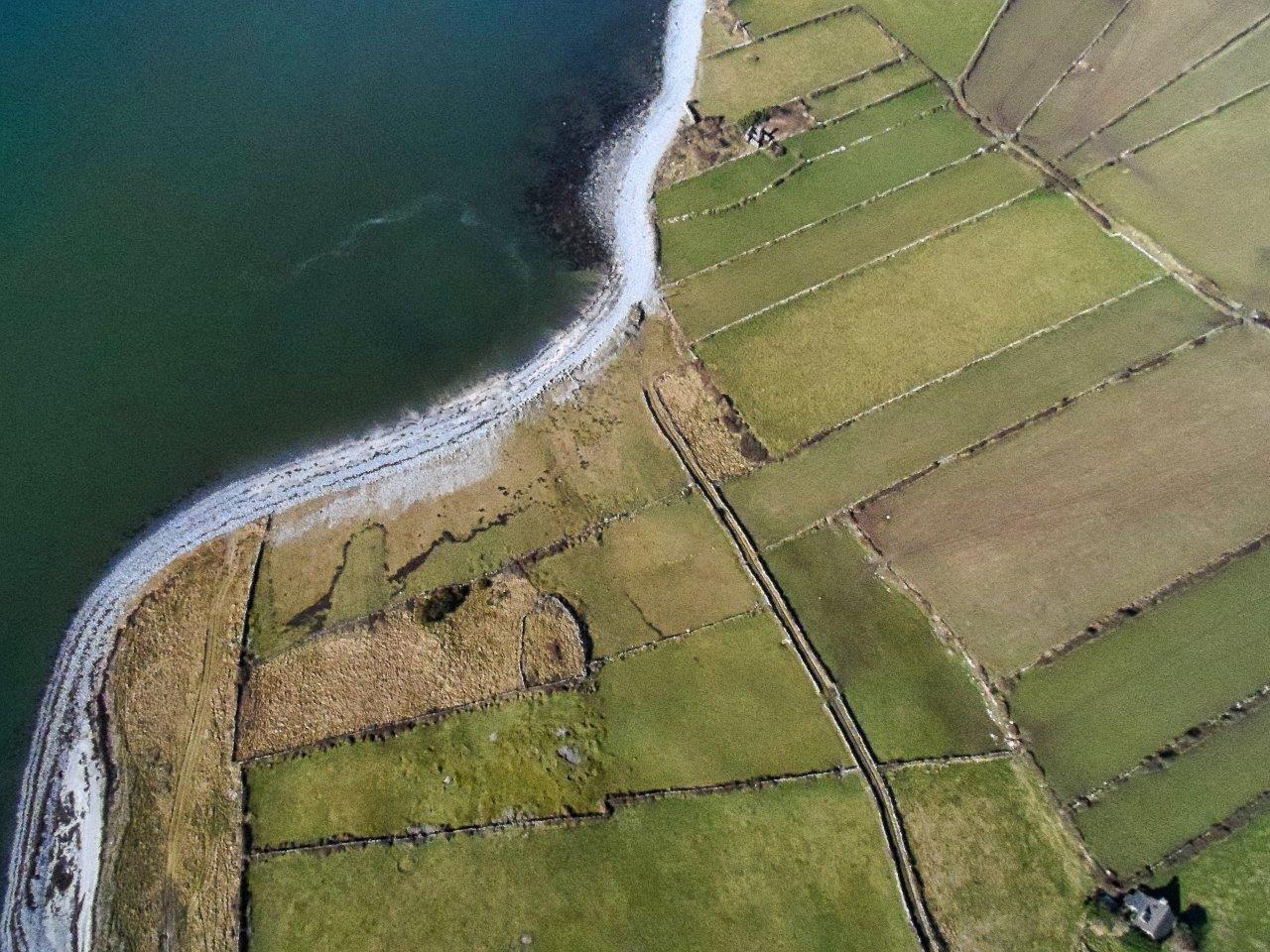
INTRODUCTION
I had thought that the nearest County Clare had to an inhabited Atlantic island was Inis Oírr. It is known affectionately on occasion as "the Clare Aran" on account of it strong historical links with Clare. However, Inis Oírr enjoys stronger links with the Galway mainland today and is administratively part of County Galway. Inis Oírr
is like its sister islands, Inis Meáin and Inis Mór, a Galway island.
Nonetheless, it did dawn on me quite recently that Clare does in fact have its own inhabited Atlantic island. It is Aughinish in the extreme north-west of the county. Some argue that Aughinish was only an island for a brief period from its detachment from the mainland in the 1750s to its re-attachment via a causeway in the early 1800s.
However, since Aughinish was "islanded" by a natural event (a tsunami) and "de-islanded" by a man-made structure (a causeway), it is still technically and resolutely an island . Aughinish enjoys its deserved place amongst the 570 islands documented in the encylopedic Irish islands guide Oileáin
by David Walsh (2004, Pesda Press).
THE STORY OF AUGHINISH
Aughinish is a townland located in the very north of County Clare on the southern shores of Galway Bay. It is separated from the rest of Clare by water. Aughinish is peculiar in that it is only accessible by land via the neighbouring county of Galway. It is a small reality - only about 3 kilometres long and 1.6 kms wide.
The place name is an English language mangling of the Gaelic Eachinis
. Eachinis
translates as Horse Island. "Ock-in-ish" is how the locals pronounce the name.
Aughinish was originally connected to County Clare. However, that connection was lost in 1755 due to the tsunami effect of the enormous Lisbon earthquake. The Great Lisbon Earthquake may have caused the deaths of up to 50,000 people. Its shocks were felt as far south as North Africa and as far north-west as the west coast of Ireland.
Subsequently, the British built the 0.80 km causeway from Aughinish to the County Galway mainland in order to service their troops in the martello tower constructed on the island after 1811.
Martello towers are circular coastal fortifications which the British built along the Irish coastline (and the coastline of the south east of England) in the early years of the 19th century as they feared a Napoeonic invasion of the then United Kingdom of Great Britain and Ireland. Aughinish's modern history has thus been literally shaped by two great European events - the 18th century Lisbon earthquake and poor Anglo-French relations at the turn of the 18th and 19th centuries.
Despite the causeway, Aughinish has an island-like feel to it.......a place apart with only about 50 inhabitants. The population was more than 300 people prior to the Great Hunger of 1845-49 (Swinfen 1992, 7).
Aughinish's remoteness means that only the most intrepid visitor will seek it out. A visit is more than worth it as the island is not only rich in history and heritage but it also enjoys a beautiful coastal location.
BIBLIOGRAPHY
Swinfen, A. (1992). Forgotten Stones Ancient Church Sites of the Burren and Environs.
The Lilliput Press.
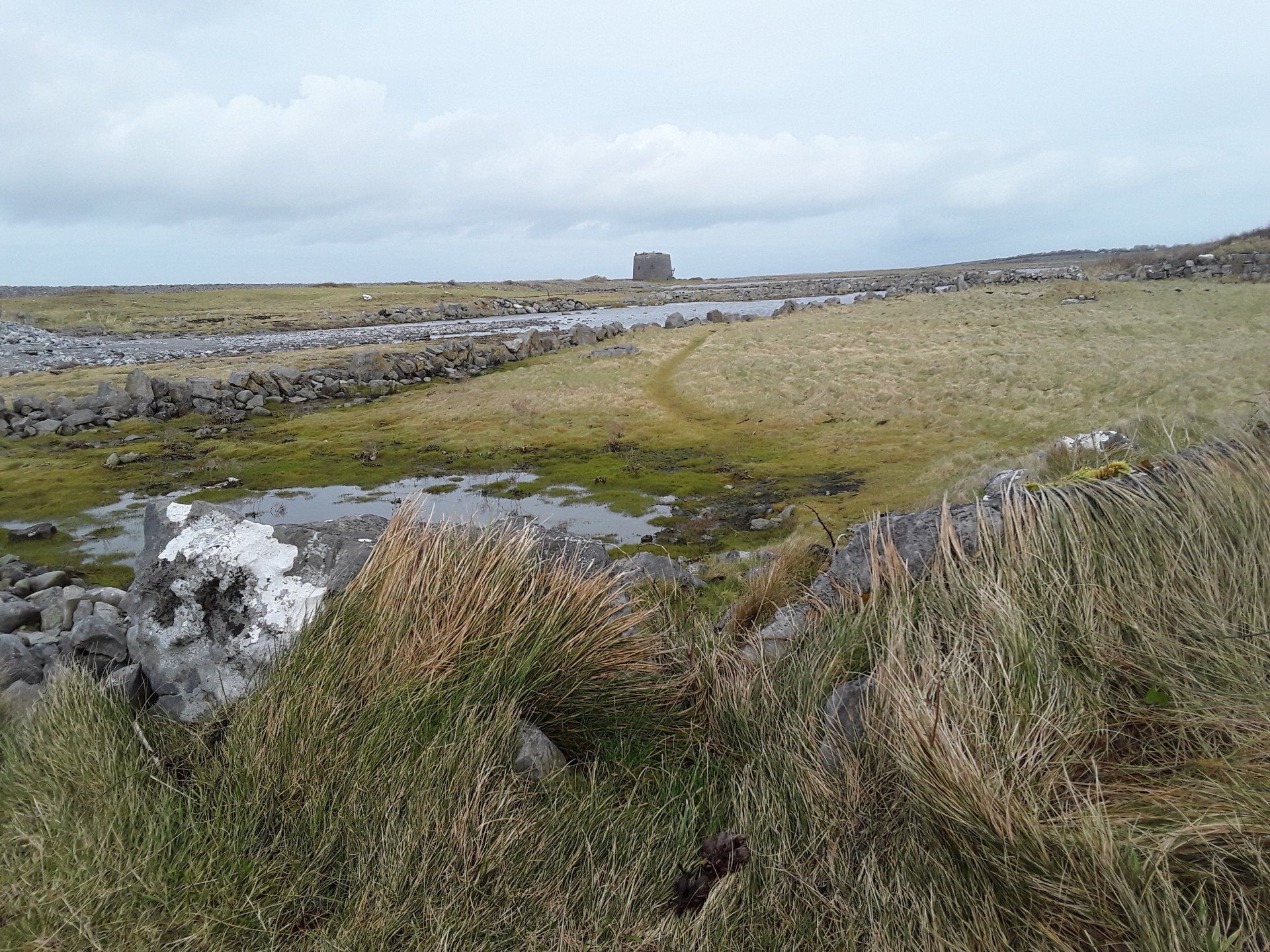
VISITING THE ISLAND
I have had occasion to visit the island only twice ever. I visited 15 years ago in order collect a consignment of wedding wine from a German organic wine importer and vegetable grower, Dirk Flake. I visited again in February this year. However, the motive this time was not vinicultural but more about the cultural landscape!
I am currently conducting a survey of killeens (children's burial grounds) in North Clare. I have a provisional list of 30 such sites. Killeens are unconsecrated burial grounds for people who were not deemed worthy of interment on blessed ground. Excavations reveal that the majority of those buried at killeens are unbaptised infants. However, there are also adolescents and adults interred at killeens who were considered deviant in that they were ordained not to have followed life's normal courses - a category of otherness. This funerary apartheid had its roots in the 16th century Roman Catholic Counter-Reformation. The separate burial tradition was abolished by the Second Vatican Council in the 1960s.
The Aughinish killeen is located in the north-west of the island. I am very grateful to Nick Geh for the spectacular aerial images - including the one of the killeen. The photos were taken from Nick's light aircraft.
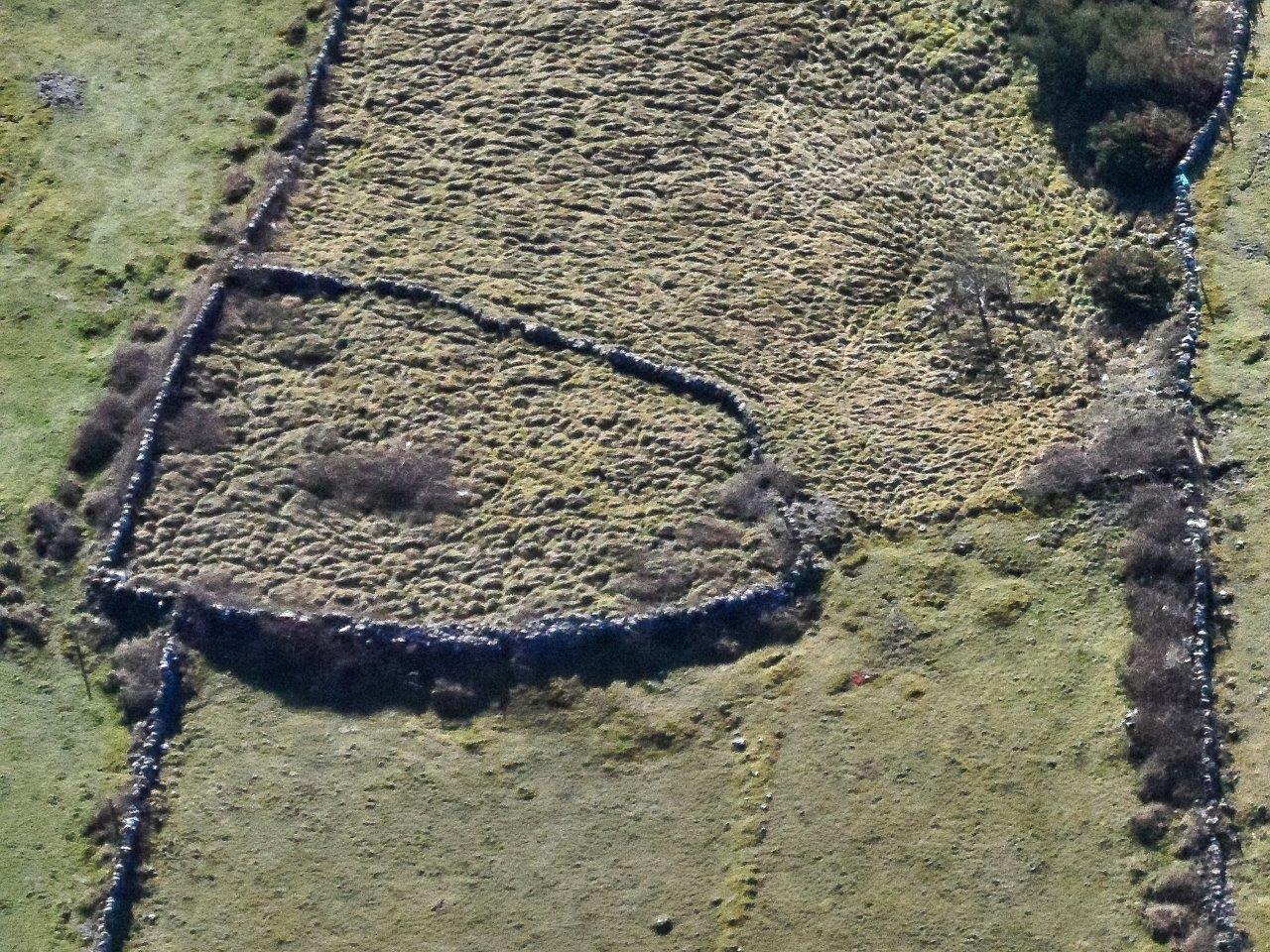
CHILDREN'S BURIAL GROUND
There are over 1,400 recorded killeens in Ireland. Many of them today are neglected monuments to the forgotten dead. However, in the last two to three decades, a minority of the sites have been restored by local communities and blessed by clergy. In such cases, the killeens have been transformed in to quasi-gardens of remembrance.
The hitherto neglected Aughinish killeen became one such site of active remembrance in September 1994 . According to island historian Rose Glynn, the graveyard was then enclosed by a dry stone wall. The parish priest of New Quay at the time, Fr Heneghan, blessed the site and said mass there. There was a large attendance at the cemetery. A local man, the late Pat Keane, had a stone cross erected on site in memory of two of his children who are buried there (Glynn 2002, 10). Reconciliation had broken out and the burial place of the forgotten had been finally recognised as holy ground.
Artist Áine Philips inserted temporary public sculptures at three Clare killeens in 2005 in a Ground Up Artists' Collective Project. Philips' particular project was called Shelters (3 Cillíní). Aughinish was one of the sites at which a sculpture was placed.
BIBLIOGRAPHY
Glynn, R. (2002). The Story of Aughinish.
Rose Glynn.
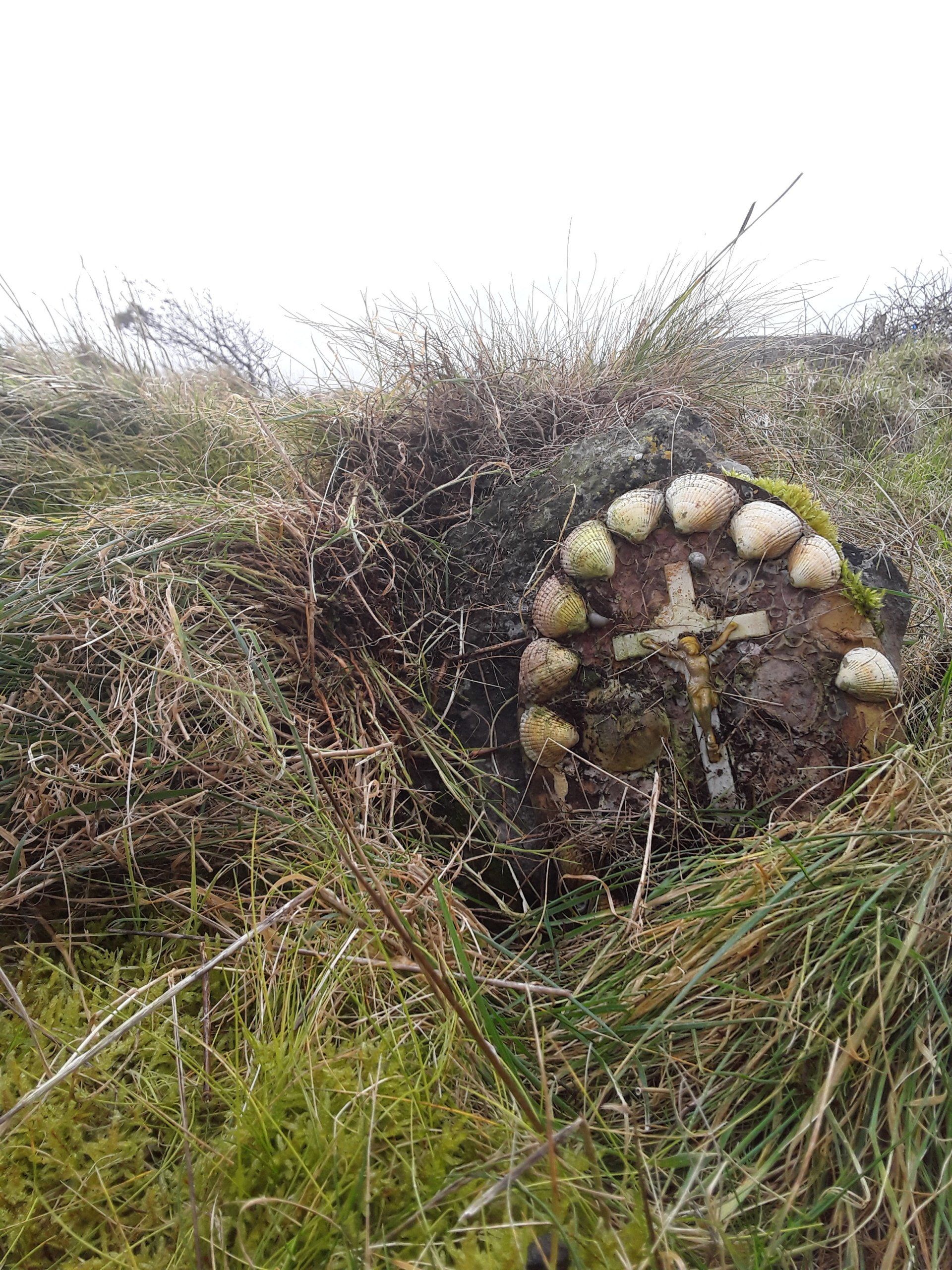
CHILDREN'S BURIAL GROUND NOW
I visited the killeen in February of this year and it had a really dishevelled look about it. The enclosure wall was decayed in parts. The primitive, unmarked headstones were overwhelmed by rank vegetation and scrub. Furthermore, the stone cross was shattered. The burial ground seems to have gone from birth to decay to re-birth to decay yet again. It would be wonderful if the site had another coming though a locally-driven conservation project with the consent of the land owner.
GOT TO GO BACK
The remains of an old church and a baking house are also located in this north-western corner of the island. The ruins are testament to a much bigger population in pre-Great Hunger times. I had not time to see them on my February visit.
Journalist Susan Daly wrote the article "5 Unusual Ways to Reach Very Special Irish Places" for the on-line periodical journal.ie in October 2012. "The interesting geographical anomaly" of Aughinish was one of the very special places featured. "Got To Go Back" as the title of the Van Morrison song says.
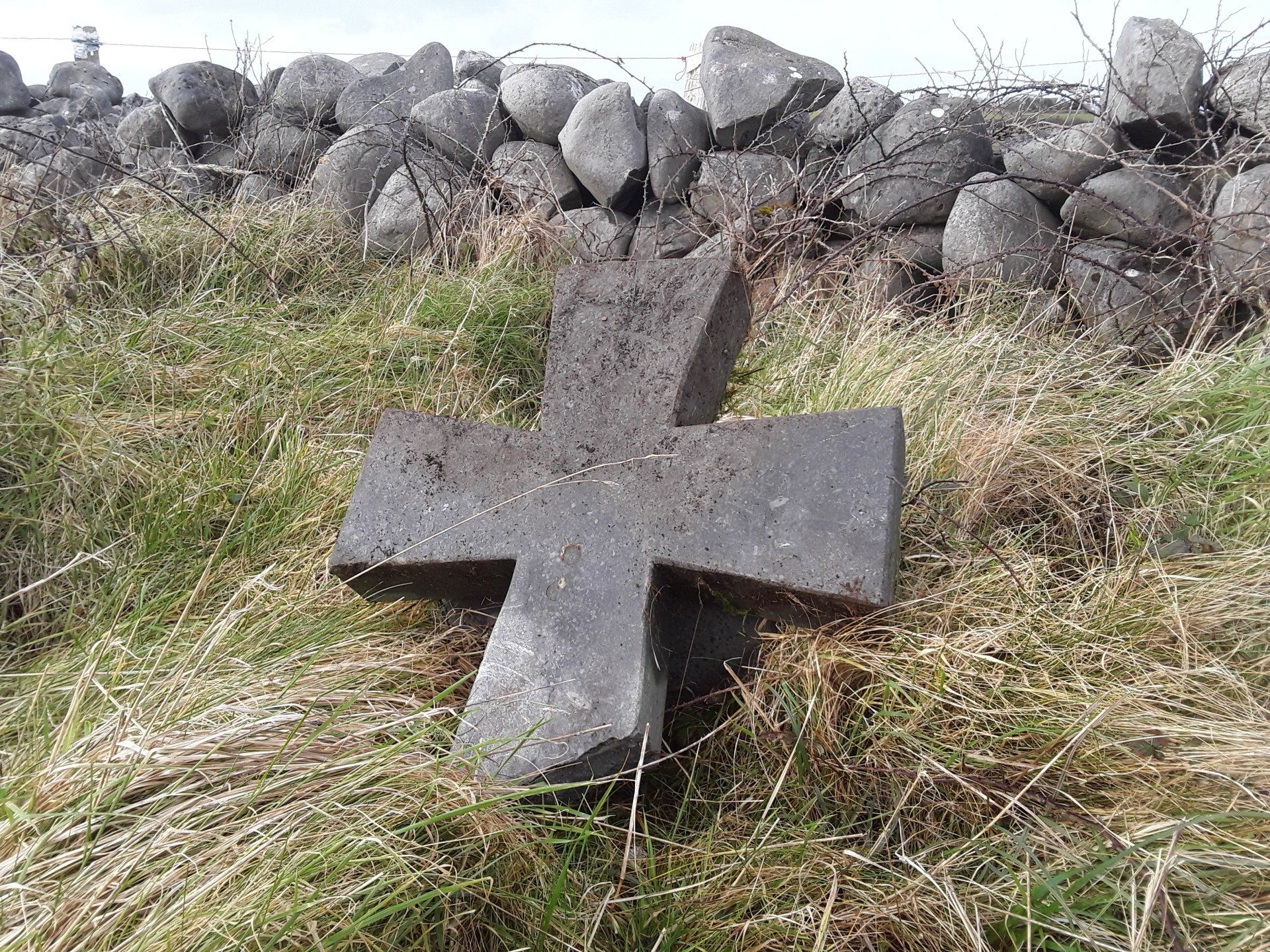
EPILOGUE - PEOPLE
Nick Geh is a Bristol native living in County Galway. He is an aviator with a passion for heritage and the outdoors amongst other things.
Dirk Flake has been market gardening since 1981. He sells his produce at a number of farmers' markets. His imported organic wines are retailed in a number of outlets in Galway.
Rose Glynn was an Aughinish native. She wrote a precious history of the island and self-published in 2002. "The Story of Aughinish" is an out-of-print 92 page paperback. A small number of used copies are available on line and are reasonably priced. Sadly Rose passed away in February this year. Codladh sámh.
Rest in peace.
Van Morrison released the recording "No Guru, No Method, No Teacher" in 1986. It was his 16th studio album. It features the song "Got To Go Back".



